Removal Procedure
Caution: Remove the fuel tank cap and relieve the fuel system pressure before
servicing the fuel system in order to reduce the risk of personal injury.
After you relieve the fuel system pressure, a small amount of fuel may be
released when servicing the fuel lines, the fuel injection pump, or the connections.
In order to reduce the risk of personal injury, cover the fuel system components
with a shop towel before disconnection. This will catch any fuel that may
leak out. Place the towel in an approved container when the disconnection
is complete.
Notice: Servicing of the supercharger unit itself is limited to replacement
only. No attempt should be made to disassemble the supercharger, as parts
damage may result.
Caution: Before servicing any electrical component, the ignition and start switch must be in the OFF or LOCK position and all electrical loads
must be OFF, unless instructed otherwise in these procedures. If a tool or equipment could easily come in contact with a live exposed electrical terminal, also disconnect the negative battery cable. Failure to follow these precautions may cause personal injury
and/or damage to the vehicle or its components.
- Disconnect
the negative battery cable. Refer to
Battery Negative Cable Disconnection and Connection
in Engine Electrical.
- Remove the fuel injector sight shield. Refer to
Fuel Injector Sight Shield Replacement
.
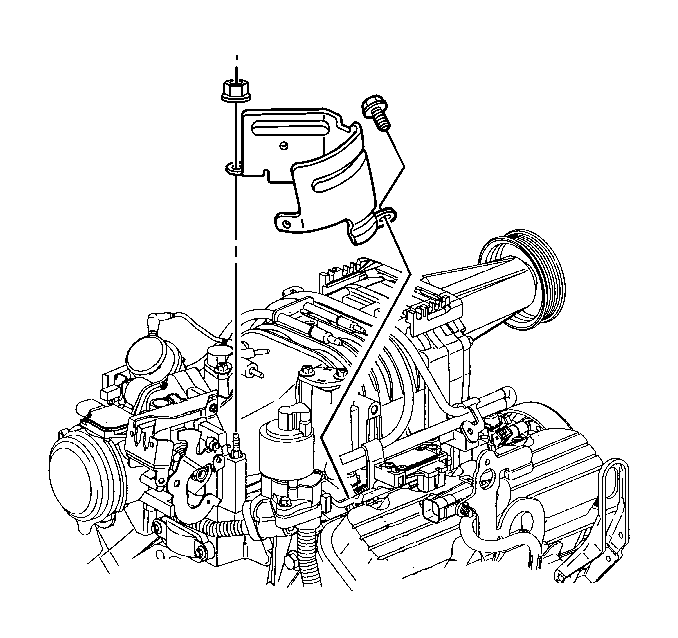
- Remove the exhaust gas recirculation (EGR) valve heat shield nut, bolt
and the heat shield.
- Remove the supercharger drive belt. Refer to
Drive Belt Replacement
.
- Remove the right spark plug wires from the ignition module and
reposition. Refer to
Spark Plug Wire Replacement
in Engine Controls - 3.8L.
- Remove the generator brace. Refer to
Generator Brace Replacement
in Engine Electrical.
- Remove the MAP sensor bracket. Refer to
Manifold Absolute Pressure Sensor Replacement
in Engine Controls - 3.8L.
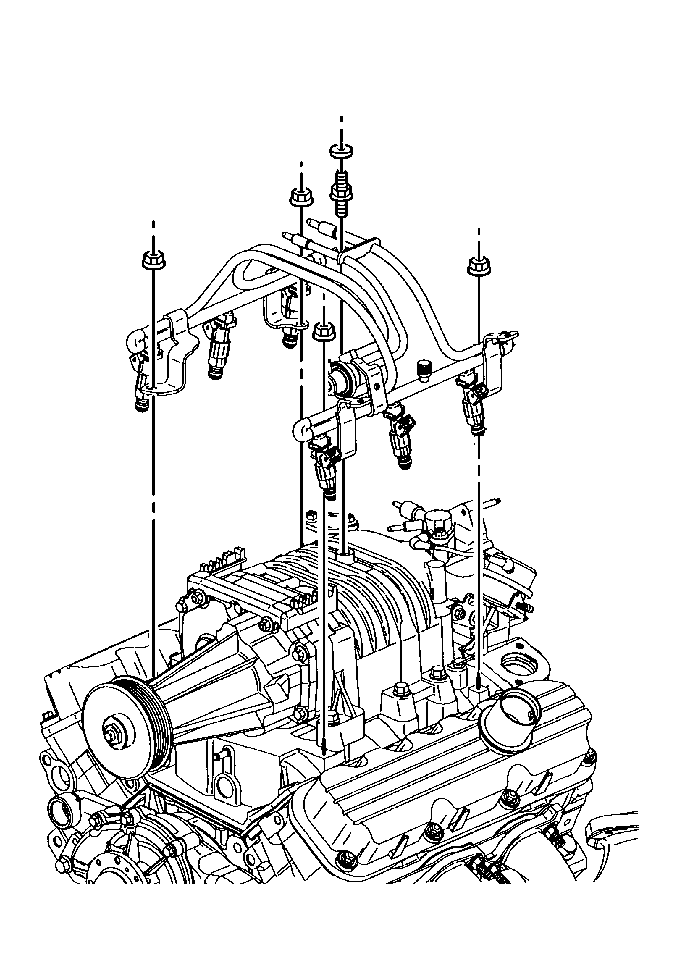
- Relieve the fuel pressure.
Refer to
Fuel Pressure Relief
in Engine Controls - 3.8L.
- Remove the fuel rail assembly. Refer to
Fuel Injection Fuel Rail Assembly Replacement
in Engine Controls - 3.8L.
- Remove the boost control solenoid. Refer to
Boost Control Solenoid Replacement
in Engine Controls - 3.8L.
- Disconnect the vacuum lines from the following:
| • | The fuel pressure regulator valve |
| • | The supercharger bypass valve |
| • | The manifold vacuum source |
- Disconnect the electrical connectors from the following:
| • | The supercharger bypass valve |
| • | The exhaust gas recirculation (EGR) valve |
| • | The EVAP purge solenoid |
| • | The mass air flow (MAF) sensor |
| • | The throttle position (T/P) sensor |
| • | The idle air control (IAC) valve |
| • | The intake air temperature (IAT) sensor |
- Remove the accelerator and the cruise control cables with the
bracket from the throttle body. Refer to
Accelerator Control Cable Bracket Replacement
in Engine Controls - 3.8L.
- Remove the air inlet duct from the throttle body.
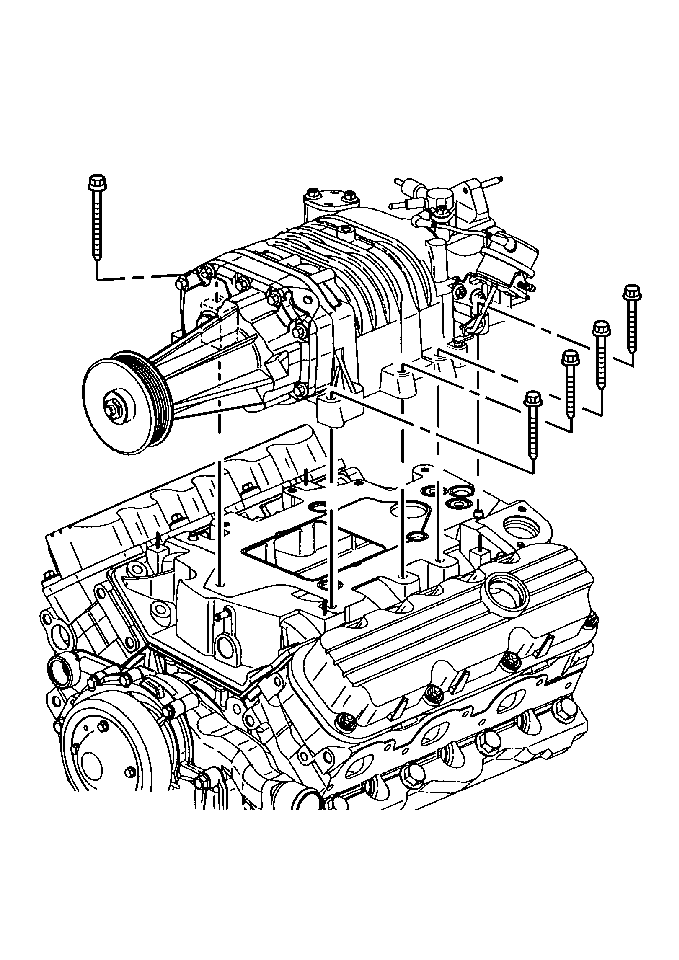
- Remove the supercharger
left bolts.
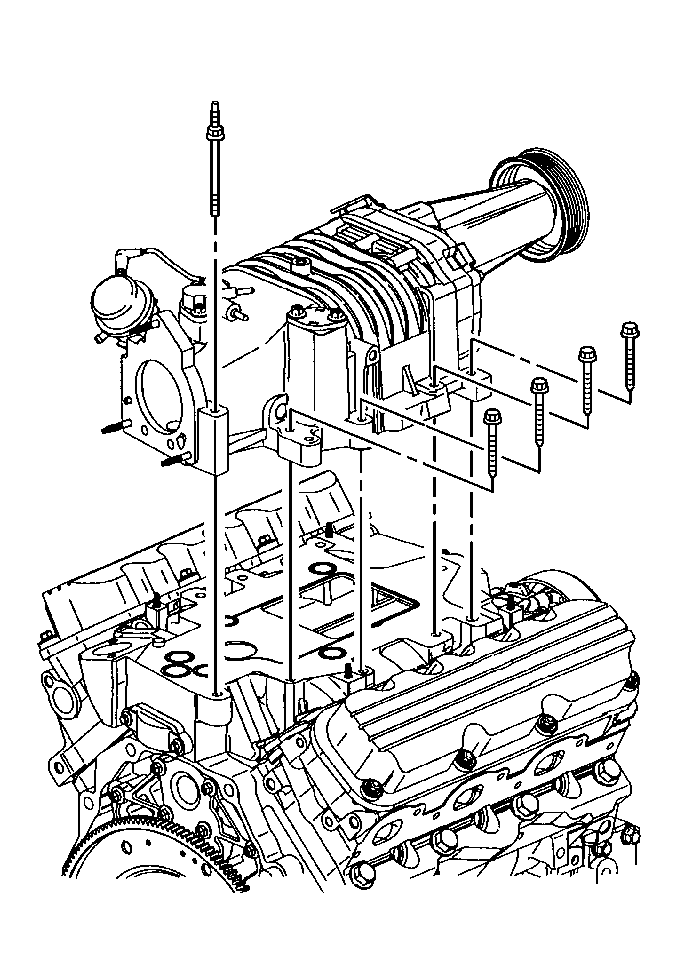
- Remove the supercharger
right bolts.
- Remove the supercharger.

- Remove the supercharger
gasket.
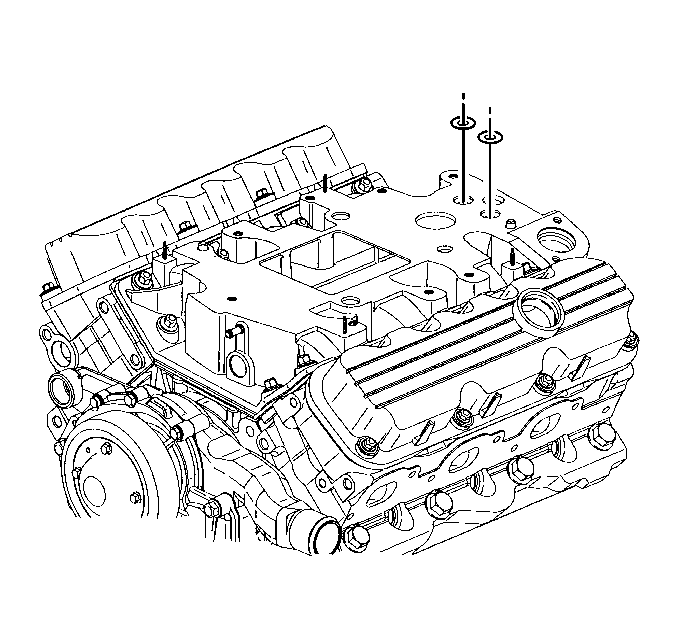
- Remove the supercharger
O-ring seals.
- Clean the lower intake manifold-to-supercharger mating surfaces.
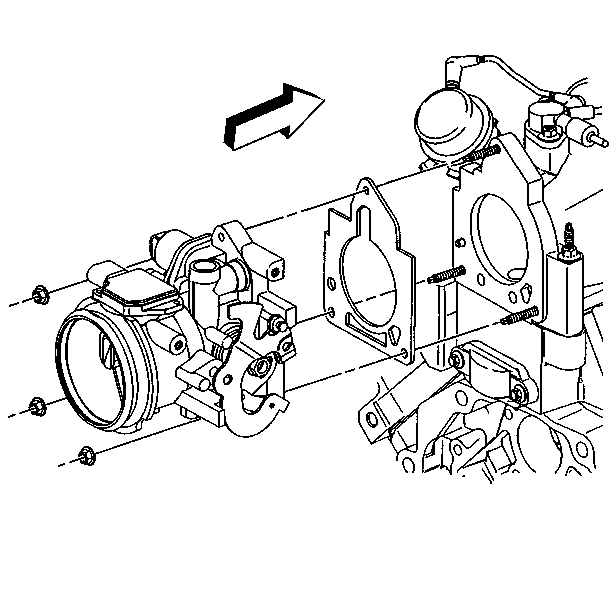
- If replacing the supercharger
remove the following:
| • | The positive crankcase ventilation (PCV) valve |
| • | The supercharger bypass valve |
| • | The manifold vacuum source |
Installation Procedure

- If replacing the supercharger
install the following:
| • | The manifold vacuum source |
| • | The supercharger bypass valve |
| • | The positive crankcase ventilation (PCV) valve |

- Install the new supercharger
O-ring seals.

Important: Do not use any sealer on the gasket.
- Install the new supercharger gasket.
- Install the supercharger.

- Loosely install the supercharger
right bolts.

Notice: Use the correct fastener in the correct location. Replacement fasteners
must be the correct part number for that application. Fasteners requiring
replacement or fasteners requiring the use of thread locking compound or sealant
are identified in the service procedure. Do not use paints, lubricants, or
corrosion inhibitors on fasteners or fastener joint surfaces unless specified.
These coatings affect fastener torque and joint clamping force and may damage
the fastener. Use the correct tightening sequence and specifications when
installing fasteners in order to avoid damage to parts and systems.
- Loosely install
the supercharger left bolts.
Tighten
Tighten the supercharger bolts starting from the center and working
to the outside of the supercharger to 23 N·m (17 lb ft).
- Install the air inlet duct to the throttle body.
- Install the accelerator and the cruise control cables with the
bracket to the throttle body. Refer to
Accelerator Control Cable Bracket Replacement
in Engine Controls - 3.8L.
- Connect the electrical connectors to the following:
| • | The intake air temperature (IAT) sensor |
| • | The idle air control (IAC) valve |
| • | The throttle position (T/P) sensor |
| • | The mass air flow (MAF) sensor |
| • | The EVAP purge solenoid |
| • | The exhaust gas recirculation (EGR) valve |
| • | The supercharger bypass valve |
- Connect the vacuum lines to the following:
| • | The manifold vacuum source |
| • | The supercharger bypass valve |
| • | The fuel pressure regulator valve |
- Install the boost control solenoid. Refer to
Boost Control Solenoid Replacement
in Engine Controls - 3.8L.

- Install the fuel rail
assembly. Refer to
Fuel Injection Fuel Rail Assembly Replacement
in Engine Controls - 3.8L.
- Install the MAP sensor bracket. Refer to
Manifold Absolute Pressure Sensor Replacement
in Engine
Controls - 3.8L.
- Install the generator brace. Refer to
Generator Brace Replacement
in Engine Electrical.
- Install the right spark plug wires to the ignition module. Refer
to
Spark Plug Wire Replacement
in Engine
Controls - 3.8L.
- Install the supercharger drive belt. Refer to
Drive Belt Replacement
.

- Install the exhaust gas recirculation (EGR) valve heat shield, nut and
bolt.
Tighten
Tighten the EGR heat shield nut and bolt to 10 N·m (89 lb in).
- Install the fuel injector sight shield. Refer to
Fuel Injector Sight Shield Replacement
.
- Connect the negative battery cable. Refer to
Battery Negative Cable Disconnection and Connection
in Engine Electrical.
- Inspect for vacuum leaks.














